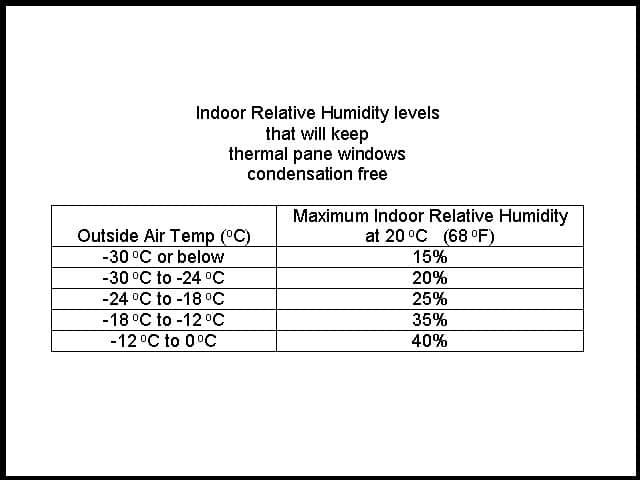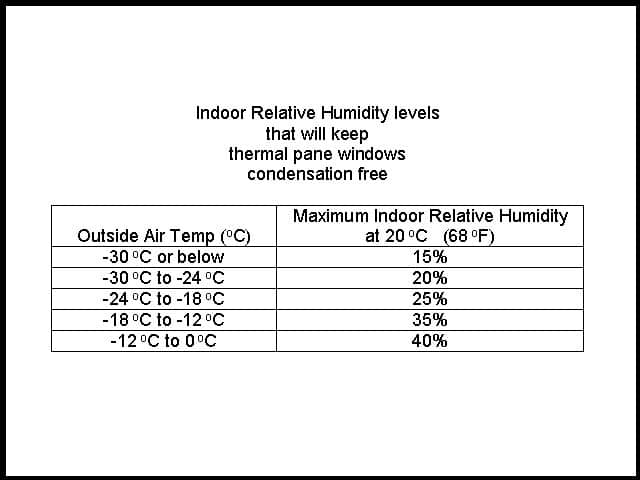Maintaining the ideal indoor humidity level during winter is essential for comfort and well-being.
As the colder months approach, balancing keeping your home warm and ensuring the air is not too dry becomes crucial.
This article will explore the recommended humidity level for your home in winter, the potential effects of incorrect humidity, and practical tips to achieve the perfect balance for a cozy and healthy environment.
So sit back, relax, and discover how to create an ideal indoor climate this winter.
Review contents
What Is the Ideal Indoor Humidity Level in Winter at Home?
Factors that affect indoor humidity levels in winter
During winter, maintaining the ideal indoor humidity level is crucial for your comfort and health. Several factors can affect indoor humidity levels during this time of year. One major factor is the weather outside.
Cold winter air tends to be drier, leading to low indoor humidity levels. Another factor is the heating system used in your home. Many heating systems, such as forced-air furnaces, can further dry out the air, resulting in decreased indoor humidity.
Additionally, the insulation in your home can play a role in humidity levels. Poorly insulated homes may have difficulty retaining moisture, leading to lower humidity.
The importance of maintaining proper indoor humidity in winter
Maintaining proper indoor humidity levels in winter is essential for several reasons. Firstly, it helps to keep you comfortable.
Dry air can cause discomfort, leading to dry skin, itchy eyes, and sore throat. Adequate humidity can help prevent these issues and provide a more pleasant indoor environment. Secondly, proper humidity levels can help protect your furniture and belongings.
Dry air can cause wooden furniture to shrink and crack and increase static electricity, potentially damaging electronic devices. Lastly, maintaining the proper humidity level can support better respiratory health.
Dry air can worsen respiratory conditions, such as asthma and allergies, while adequate humidity can help soothe the airways.
Health effects of low humidity in winter
Low humidity levels in winter can have various health effects. One of the most common issues is dry skin. When the air lacks moisture, it can cause skin to become dry, itchy, and flaky.
This can be particularly troublesome for individuals with sensitive or pre-existing skin conditions. Low humidity can also exacerbate respiratory conditions like asthma or allergies. Dry air can irritate the airways, leading to coughing, wheezing, and increased congestion.
It can also dry the nasal passages, increasing the likelihood of nosebleeds. Also, low humidity can impact your sleep quality, as dry air may cause a dry throat, leading to snoring or discomfort at night.
Health effects of high humidity in winter
While low humidity can be an issue, high humidity in winter can also have adverse health effects. Excessive humidity can create an environment favorable for mold growth, mildew, and dust mites.
This can trigger allergies and respiratory issues, such as coughing, sneezing, and congestion. High humidity can also contribute to poor indoor air quality, promoting the accumulation of allergens and pollutants.
In extreme cases, prolonged exposure to high humidity can lead to heat-related illnesses, such as heat exhaustion or heatstroke. It is essential to balance and maintain an ideal indoor humidity level.
Recommended indoor humidity levels in winter
Winter’s ideal indoor humidity level is generally between 40 to 60 percent. This range allows for optimal comfort and minimizes the risk of health issues associated with dry or humid air.
However, it is essential to note that personal preferences may vary, and individuals with certain health conditions may require specific humidity levels.
It is recommended to consult with a healthcare professional or an indoor air quality specialist to determine the most suitable humidity level for your specific needs.
How to measure indoor humidity in winter
Measuring indoor humidity in winter is relatively simple and can be done using a hygrometer.
Hygrometers are widely available and come in various types, including digital and analog options. These devices measure the air’s moisture and display the current humidity level.
To measure indoor humidity, place the hygrometer in a central location in your home, away from direct sources of moisture, such as bathrooms or kitchen areas. Leave it undisturbed for a few hours to obtain an accurate reading of the indoor humidity level.
Methods to increase humidity in winter
If your indoor humidity level is too low during winter, several methods exist to increase it. One effective method is utilizing a humidifier.
Humidifiers add moisture to the air, increasing humidity levels and improving comfort. There are various types of humidifiers available, including cool-mist and warm-mist options, depending on personal preference.
Another method to increase humidity is to place water-filled containers near heat sources, such as radiators or vents.
As the heat evaporates, the water will add moisture to the air. Finally, adding houseplants can also help increase humidity, as plants release moisture through transpiration.
Methods to decrease humidity in winter
In cases where the indoor humidity level is too high during winter, there are methods to decrease it. One effective method is using a dehumidifier. Dehumidifiers extract excess moisture from the air, helping to lower humidity levels and prevent issues associated with high humidity.
There are various types of dehumidifiers available, including portable and whole-house options. Portable dehumidifiers are suitable for smaller spaces, while whole-house dehumidifiers are integrated into the HVAC system to control humidity throughout the home.
Additionally, improving ventilation by opening windows or using exhaust fans can help remove excess moisture and reduce humidity levels.
Common mistakes to avoid when managing indoor humidity in winter
When managing indoor humidity in winter, common mistakes should be avoided. One mistake is over-humidification.
While it is essential to maintain a proper humidity level, excessive humidity can create a breeding ground for mold and other allergens. Another mistake is neglecting proper ventilation.
Good airflow helps prevent moisture buildup and promotes a healthier indoor environment. Additionally, relying solely on heating systems without considering their impact on humidity levels can lead to dry air. It is essential to balance heating and maintaining appropriate humidity levels.
Conclusion
In conclusion, maintaining the ideal indoor humidity level in winter is crucial for comfort and health. Weather, heating systems, and insulation can affect indoor humidity levels during this time of year.
Proper humidity levels can help keep you comfortable, protect your belongings, and support better respiratory health. Low humidity can cause dry skin and worsen respiratory conditions, while high humidity can promote mold growth and poor indoor air quality.
Winter’s recommended indoor humidity level is generally between 40 to 60 percent. Measuring indoor humidity can be done using a hygrometer. Methods to increase humidity include using humidifiers, placing water-filled containers, and adding houseplants.
To decrease humidity, dehumidifiers and improved ventilation are effective. It is crucial to avoid over-humidification and neglecting proper ventilation when managing indoor humidity in winter.
You can create a comfortable and healthy indoor environment during the winter months by taking the necessary steps.








































